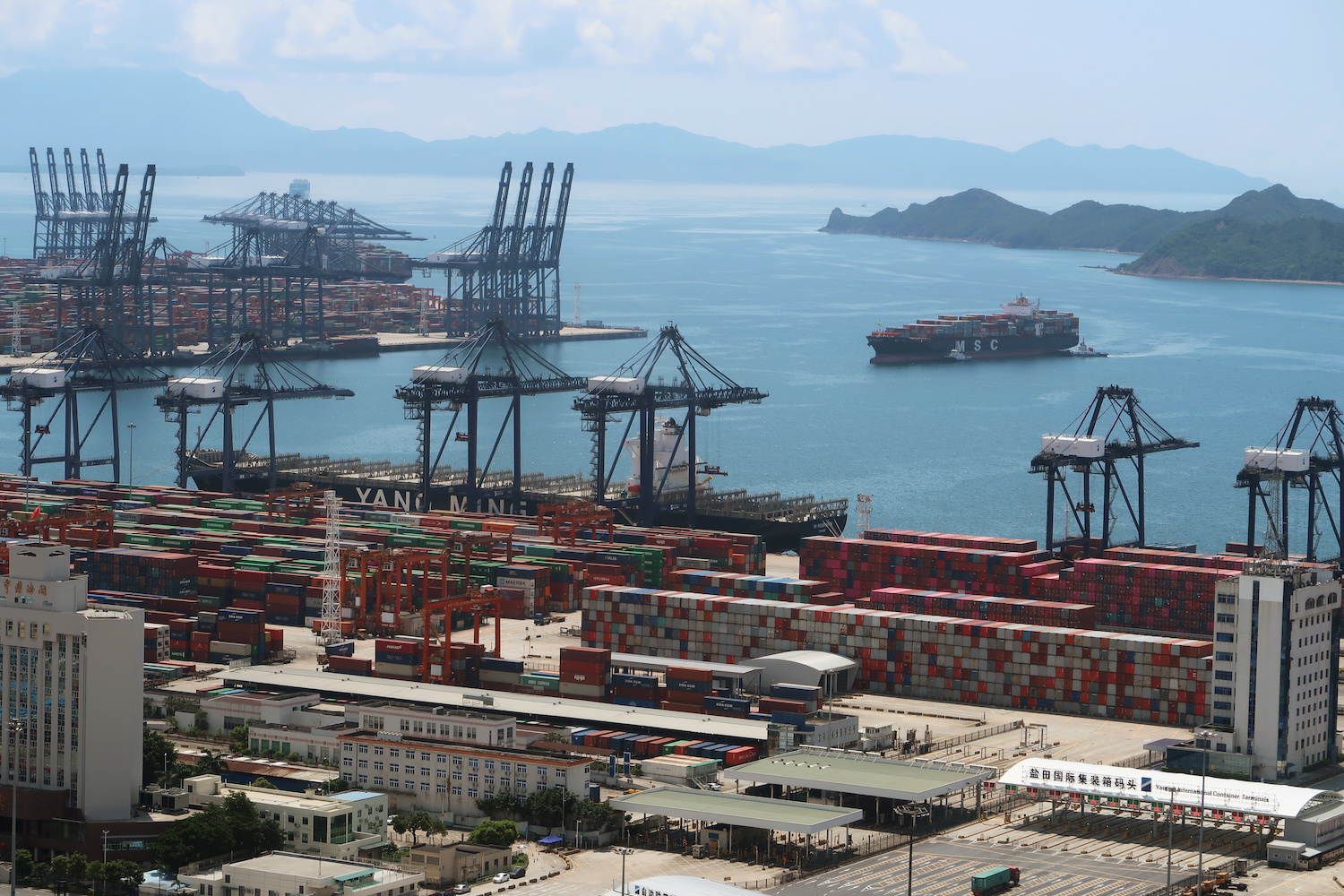(ATF) China’s trade surplus with the US widened last year despite a partial trade deal requiring Beijing to boost purchases, official figures showed on Thursday.
Donald Trump had made closing the trade gap with China a priority when he took office four years ago and launched a bruising trade war with Beijing. But China’s customs administration data released on Thursday showed the surplus climbed 7.1% to $316.9 billion, with outbound shipments boosted by sales of electronics goods and protective gear.
Although the world’s second-largest economy suffered a record contraction in the first quarter of last year as the coronavirus essentially brought activity to a halt, it soon recovered as lockdowns in the country were eased and medical exports soared.
For the whole of 2020 and including all countries and regions, exports were up 3.6% year-on-year to $2.6 trillion, an improvement on the previous year’s 0.5% gain.
Imports dipped 1.1% to just over $2 trillion, and growth was strong in the second half after China became the first major economy to recover from the pandemic.
In December, however, both exports and imports rose more than expected at 18.1% and 6.5% respectively.
Customs spokesman Li Kuiwen said at a press briefing Thursday that “facing unprecedented difficulties and challenges, our country’s imports and exports delivered a brilliant report card”, adding that the outcome was “significantly better than expected”.
Looking forward, he expected China’s exports and imports will continue to grow this year as China continues to open its market and “new international collaborations are formed bring competitive advantages”.
Exports strong despite Covid-19
Li said China’s exports have been boosted by overseas demand for personal protection, medical, and “stay-at-home” equipment.
China’s exports of medical equipment, pharmaceuticals, and textile products including masks were up 31% year-on-year and those for laptop computers, tablets, and home appliances rose 22%.
China exported 224 billion masks worth 340 billion yuan ($52.5 billion) from March to December, Li added, nearly 40 masks per person outside of China.
Beijing promised to buy more American exports in the “Phase 1” agreement last January aimed at ending the tariff war. The two governments agreed to postpone further planned tariff hikes on each other’s goods, but penalties on billions of dollars of imports remain.
China fell behind on meeting those commitments but started to catch up as demand rebounded.
Chinese imports are growing faster by volume than by value because prices of oil and other commodities sank after anti-virus curbs on travel and business depressed global demand.
The imports of iron ore sand rose 14.7% from the previous year and those of crude oil were up 7.3%. Grain and meat products rose by 28% and 60.4%.
As Beijing has deferred shipments of cotton, coal, wine, beef and barley from Australia, the country’s imports from Australia decreased by 4.6% in 2020. Li told reporters that China’s main imports from Australia are iron ore sand and natural gas, which account for 70.6% of total imports. He declined to comment whether Beijing will relax the quota on coal imports from Australia.
China’s exports to Australia rose by 11.2%, and consisted significantly of mechanical and electronic products, as well as “labor-intensive products”, Li said.
Morgan Stanley expects China’s export growth to remain robust in the coming months amid domestic supply chain resilience and unfinished orders, adding that the potential additional US fiscal stimulus could also add further impetus to China’s export momentum.
“Meanwhile, import growth would continue to catch up with improving manufacturing capex,” analysts from Morgan Stanley said.
US President-elect Joe Biden said last week he was assembling a multi-trillion-dollar relief package that includes relief for unemployed Americans and rent forbearance for tenants.
China is on track to be the only major economy to grow in 2020 while activity in the United States, Europe and Japan falls.
The world’s second-largest economy shrank by 6.8% from a year earlier in the first three months of 2020. Growth rebounded to 3.2% in the second quarter and accelerated to 4.9% in the three months ending in September.
The International Monetary Fund (IMF) has forecasted a 1.9% full-year growth for China for 2020. However, it has trimmed its growth projection for the Chinese economy in 2021 to 7.9% from 8.2%, citing headwinds from tech decoupling with the United States and domestic financial risks, to restrictions on fundraising via Hong Kong for Chinese companies.
Of China’s top five trading partners in 2020 – namely the Association of Southeast Asian Nations (ASEAN), the European Union, the US, Japan, and South Korea – Japan and Korea had a trade surplus with China while the other regions had a trade deficit.
























